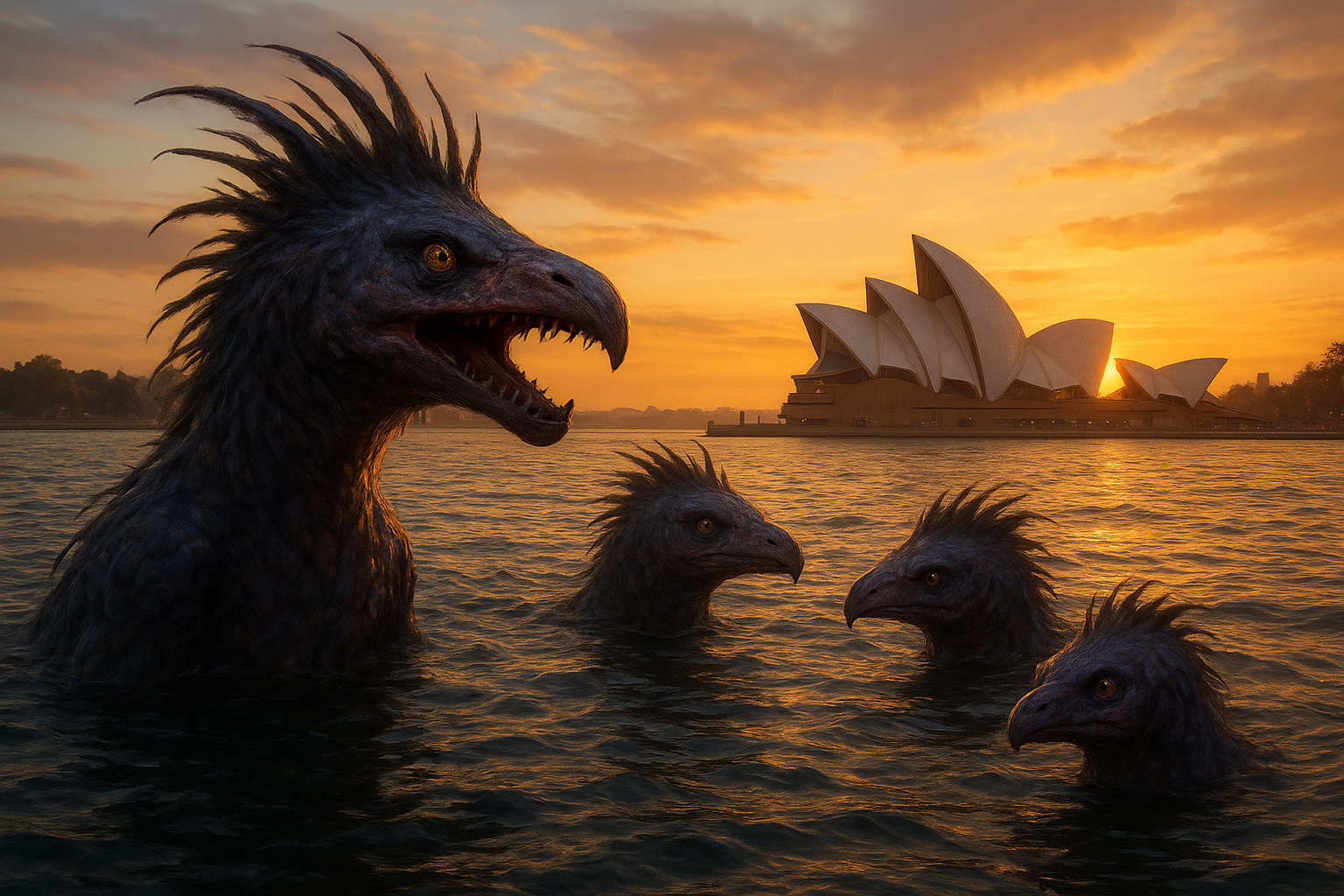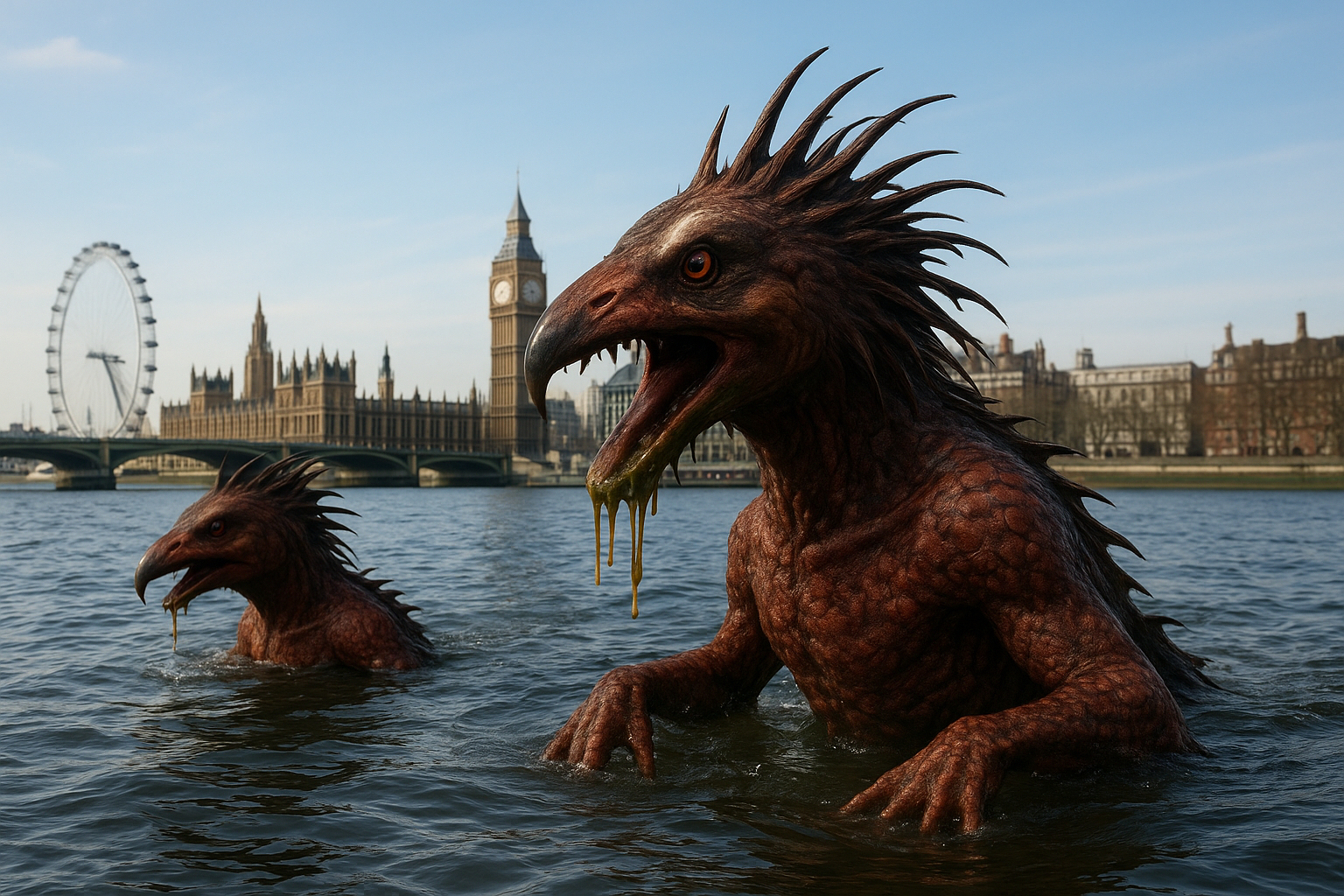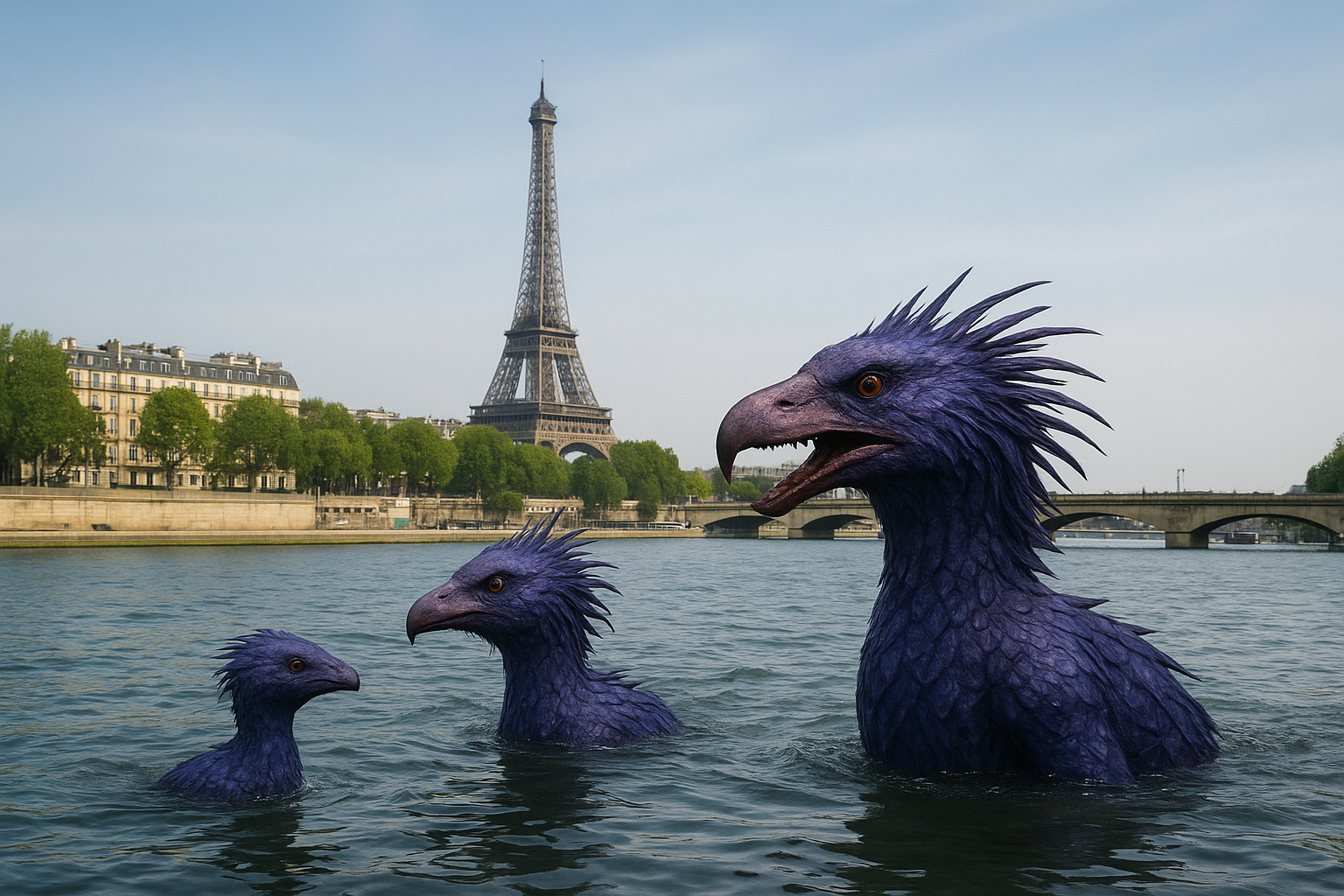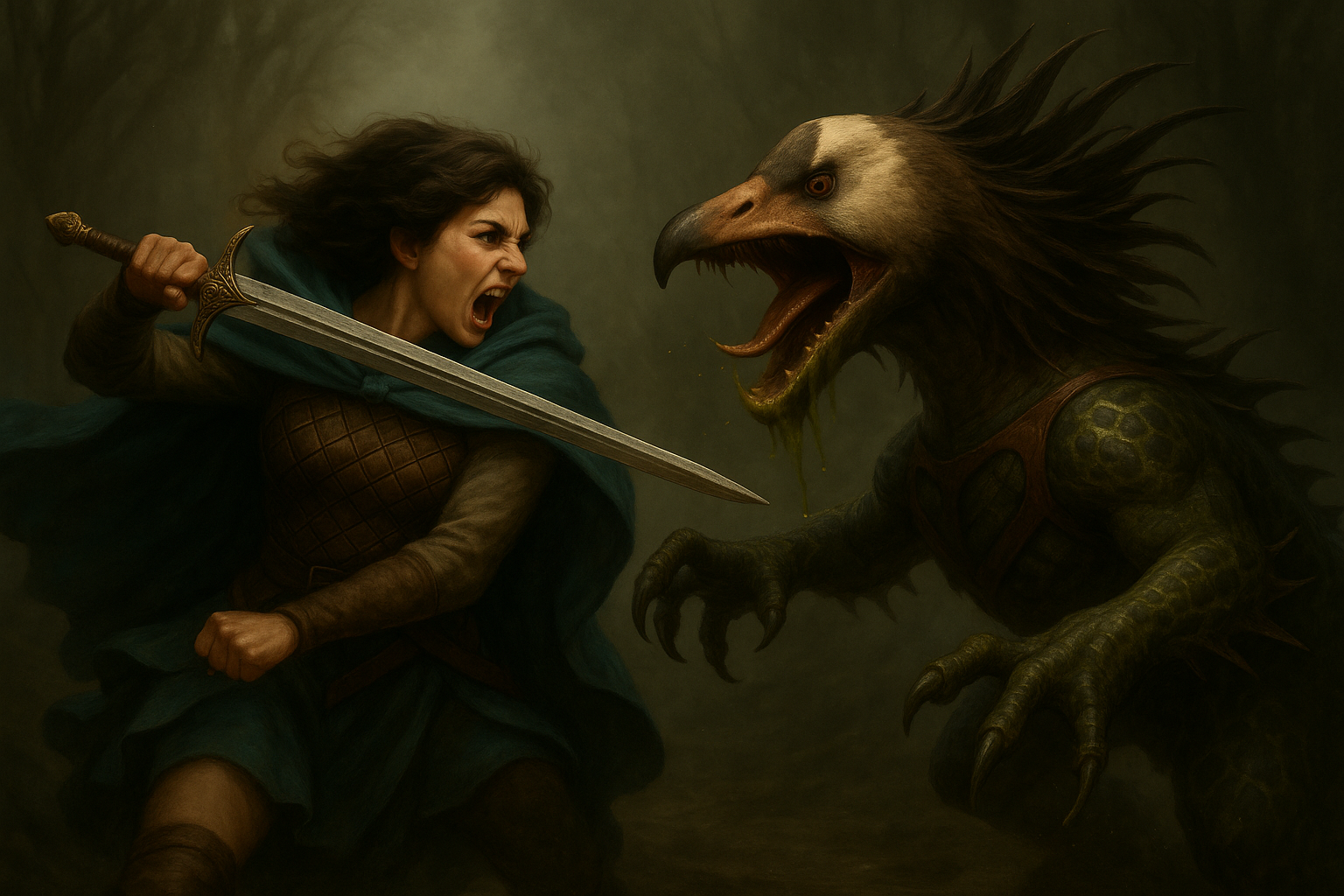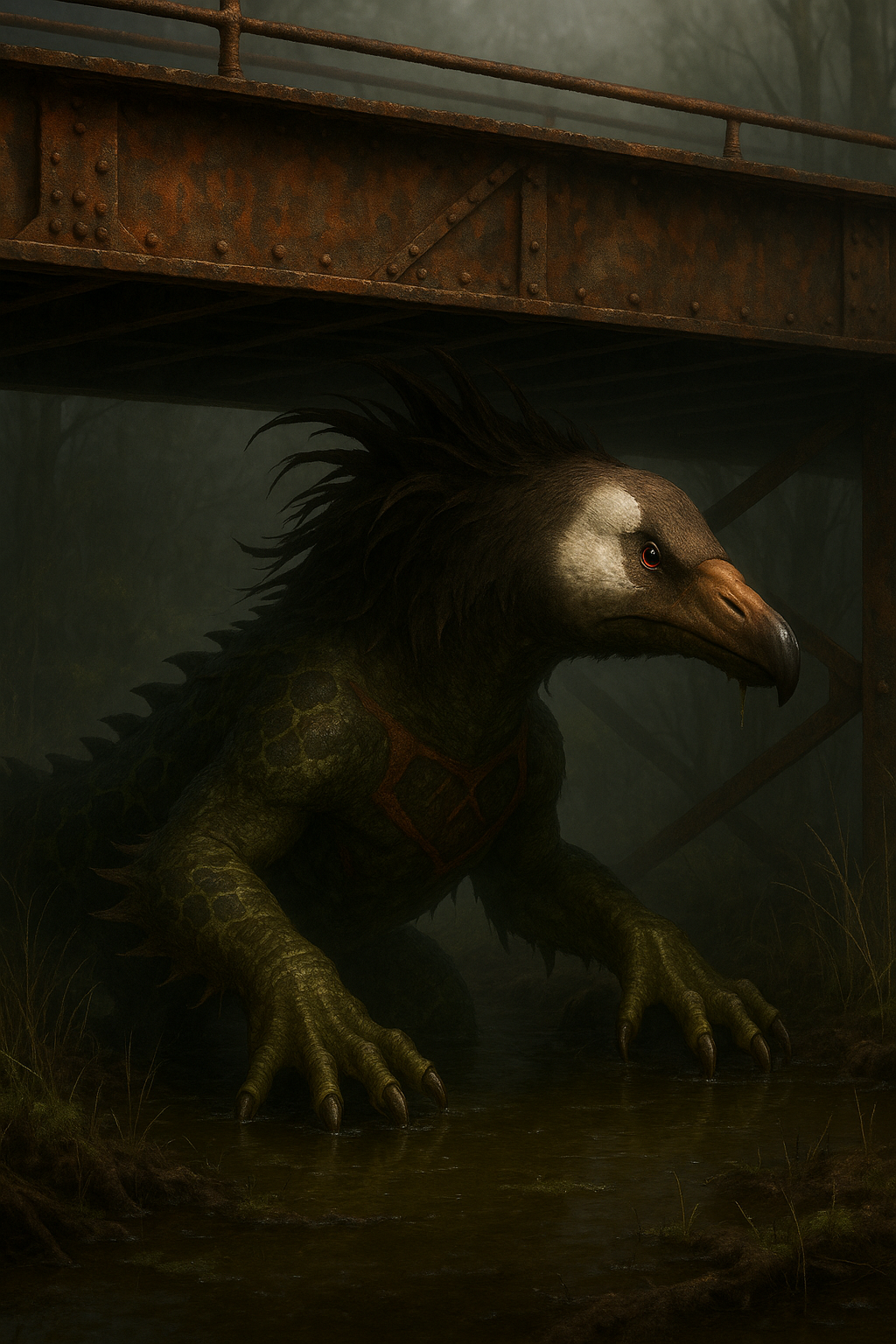Murkiwogs
In the still hours before dawn, when the mist lies heavy upon the waters and the marshes breathe like sleeping beasts, the Murkiwog stirs. Few have seen one by choice; fewer still have done so twice. Old boatmen along the bayous speak of the water rippling with no wind, of a low, guttural hiss that silences even the frogs, and of eyes — round, unblinking, and hungry — rising from the black depths like lanterns of ill omen. “Where the water grows sweet overnight,” they say, “a Murkiwog has passed through.”
Though wrapped in superstition, these tales conceal a kernel of truth. For all their monstrous aspect, Murkiwogs are not merely harbingers of dread but curious architects of their realm. They cleanse the waters they haunt, making fetid swamps drinkable again, though never without exacting a toll from the living things nearby. Scholars who have braved their territories return with accounts equal parts reverent and horrified: creatures as clever as they are cruel, guardians of poisoned lakes, and hunters whose presence can remake an entire ecosystem overnight.
Murkiwog (Lacustroanser ferox)
Family: Lacustroanidae
Average Length: 2 m (adult)
Habitat: Swamps, deep lakes, marshes, and occasionally remote desert oases
Diet: Carnivorous (amphibians, fish, waterfowl, small mammals)
Distribution: Originally North America; now scattered populations worldwide.
Description
The Murkiwog is a semi-aquatic apex predator, combining avian and reptilian traits in unsettling harmony. Its body is powerfully built, covered in mottled green-black scales, with elongated limbs ending in webbed but sharply clawed feet adapted for both swimming and ambush. The head resembles that of a goose twisted by predatory necessity: the beak is hooked and lined with backward-curving, serrated teeth suited for gripping slippery prey. Its neck is lined with flexible, hairlike tendrils that ooze a faintly luminous green mucus — a multifunctional adaptation central to its hunting and environmental role.
Adults typically stand two meters tall when fully upright, though they adopt a crouched, prowling stance in water. Their eyes are forward-facing and surprisingly expressive, granting excellent binocular vision even in low-light conditions common to their preferred habitats.
Distribution & Habitat
Although Murkiwogs are believed to have originated in the wetlands of North America, their expansion has been remarkably adaptive. They are now documented in scattered wetland pockets across Eurasia and North Africa. Of particular note are populations thriving in Saharan oases, where their water-purifying abilities have made them inadvertent keystone species in fragile ecosystems. How they arrived at these locations remains debated; some believe human relocation efforts played a role, while others suggest migratory behavior coupled with their uncanny resilience.
In recent decades, Murkiwogs have increasingly been sighted in urban environments. Chicago is unsurprising, given the city’s swampland origins and its history of supporting sizeable Murkiwog populations. More troubling to experts are reports from London and Paris, where their presence raises questions about how human development influences local ecosystems. Some researchers even suggest that these predators have played a substantial role in improving the water quality of both the Thames and the Seine, partially reversing the ecological damage wrought during the Industrial Revolution as well as both World Wars.
Equally intriguing to scholars is the remarkable variation in Murkiwog appearance across regions. Color and head-tendril size differ dramatically, leading many to speculate that local water toxins influence their morphology. In London, for example, the high concentrations of industrial acids, waste, and soluble metals in the Thames are believed to have produced a distinctive rust-colored Murkiwog strain.
Life Cycle
Murkiwogs are fiercely territorial and exhibit strong parental care. Eggs are laid in concealed nests along water margins and guarded by both parents. Hatchlings mimic the appearance of common geese — an apparent evolutionary strategy to avoid predation, and woe onto he who mistakes one for such — differing only by their bright green, webbed feet. This disguise is short-lived: after approximately 6–7 months, the young develop their distinctive forelimb claws and predatory beaks. They reach full adult size in just under two years, an unusually rapid growth rate supported by a high-protein diet.
Ecological Role & Behavior
Perhaps their most astonishing trait is their water purification ability. The tendrils along their neck act as biological filters, absorbing toxins, heavy metals, and other pollutants. These compounds are stored in specialized glands and can later be expelled in concentrated bursts. Murkiwogs use this as a hunting mechanism: by releasing toxin clouds into the water, they can incapacitate fish or amphibians, making prey capture effortless. In healthy ecosystems, this filtering contributes to maintaining water clarity and balance; however, when introduced artificially, Murkiwogs have been known to collapse delicate food chains.
Their territorial aggression is legendary. Intruders — including humans — are met with warning displays: raised crests, hissing, and water-thrashing. If provoked, Murkiwogs are capable of swift, coordinated attacks, using both claws and teeth.
Human Interaction & Myth
Early attempts to domesticate Murkiwogs for wetland restoration ended disastrously. While they can indeed clean polluted waters, their predatory nature and territoriality make them wholly unsuitable for controlled environments. Numerous folktales and local legends have sprung up around their presence, often depicting them as cursed waterfowl or guardians of hidden springs. In some isolated communities, sightings are considered omens of incoming floods.
One of the oldest known tales recording a murkiwog speas of Gwenhwyfar the Muse, a wandering warrior who arrived at a lakeside village, its people stricken with terorr. A murkiwog had taken to haunting the shallows, overtunring fishing boats and dragging livestock into the water by night. Where hunters had failed and priests faltered, Gwenhwyfar offered no sword, only her voice. Standing on the moonlit pier, she sang a melody so haunting the creature rose from the depths, lulled into a trance by her song. If she had it her way, she would have led the beast deep into the moors, saving both the village from it and it from the village. But sadly, this was not to be. As it surfaced and lumbered toward the shore, the villagers took up torches and what meager weapons they had, driving the monster into a rage from which there was no turning back.
By dawn, the lake was still again and Gwenhwyfar’s sword was stained with the murkiwog’s green blood.
At Wit’s End
Though Murukiwogs do not have a sizeable population in Sorbet County, they can still be found in some of Lake Rumoure’s alcoves. During their migration session, there is a boom of activity both around Peregrine Island as well as around Moonfall Lake near Garrett’s Hollow.

